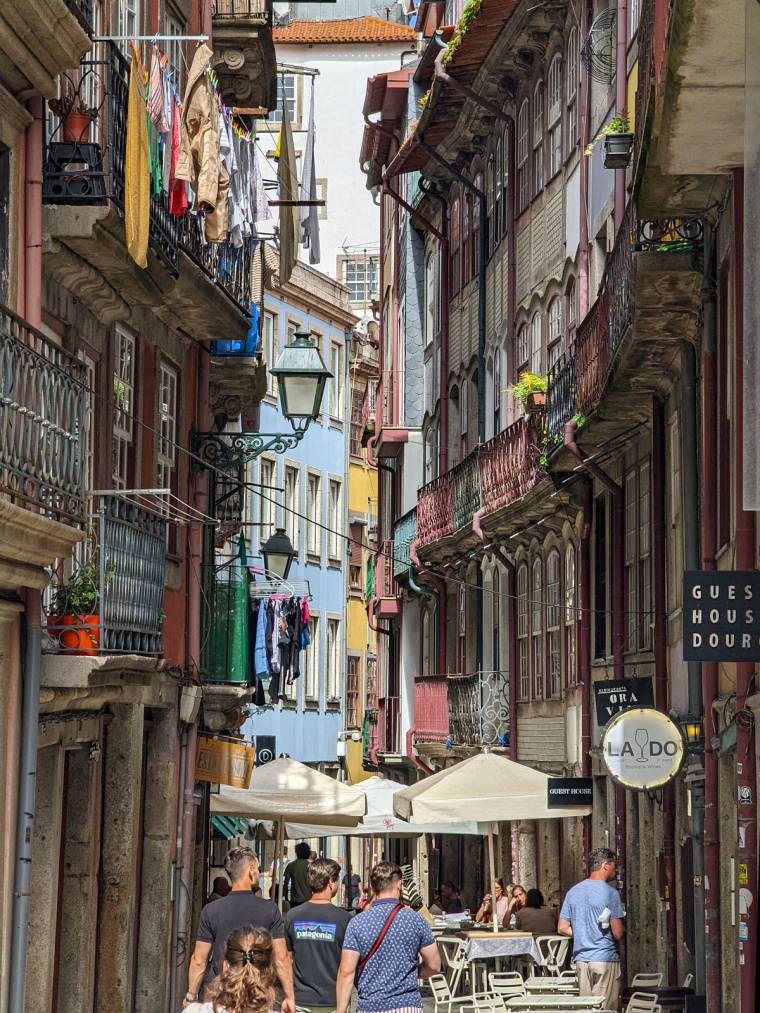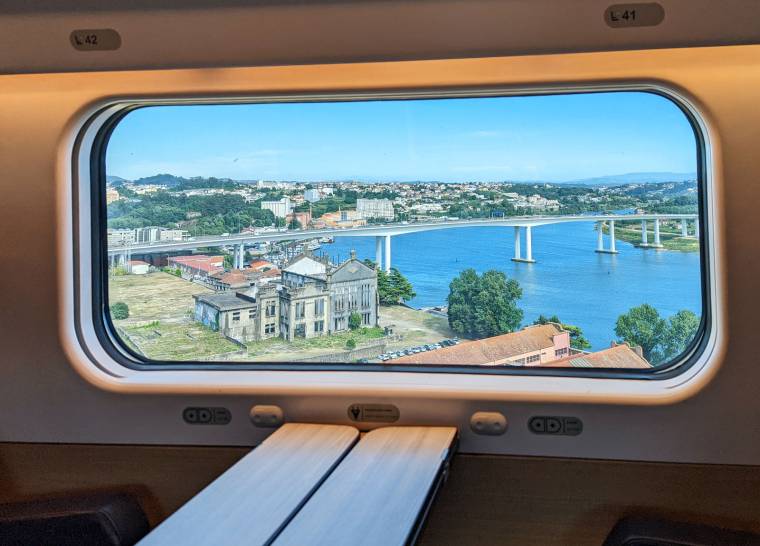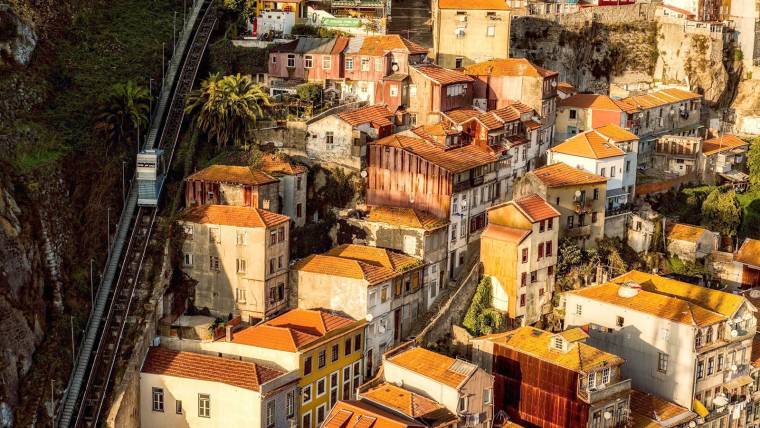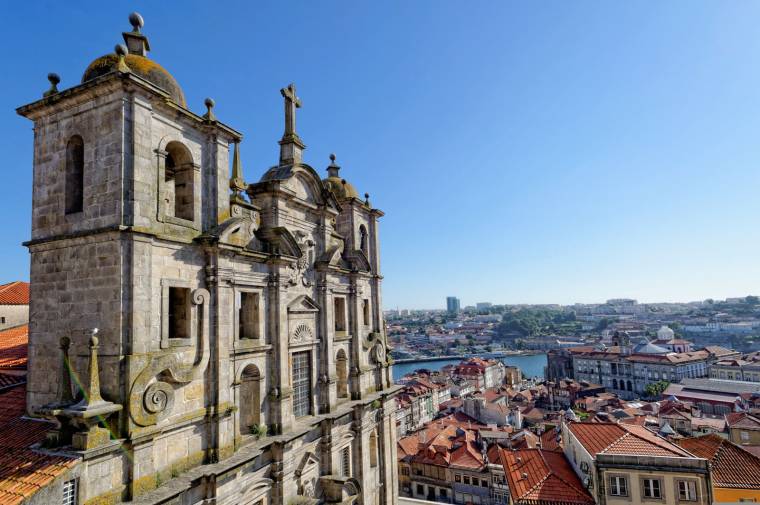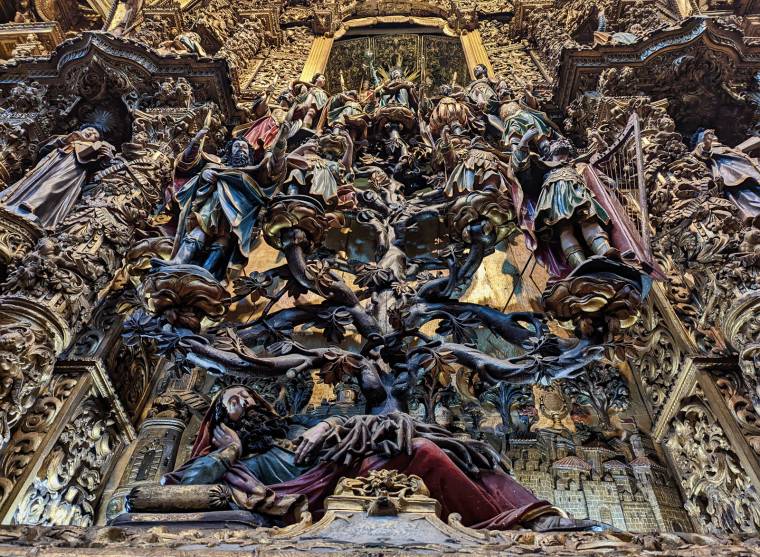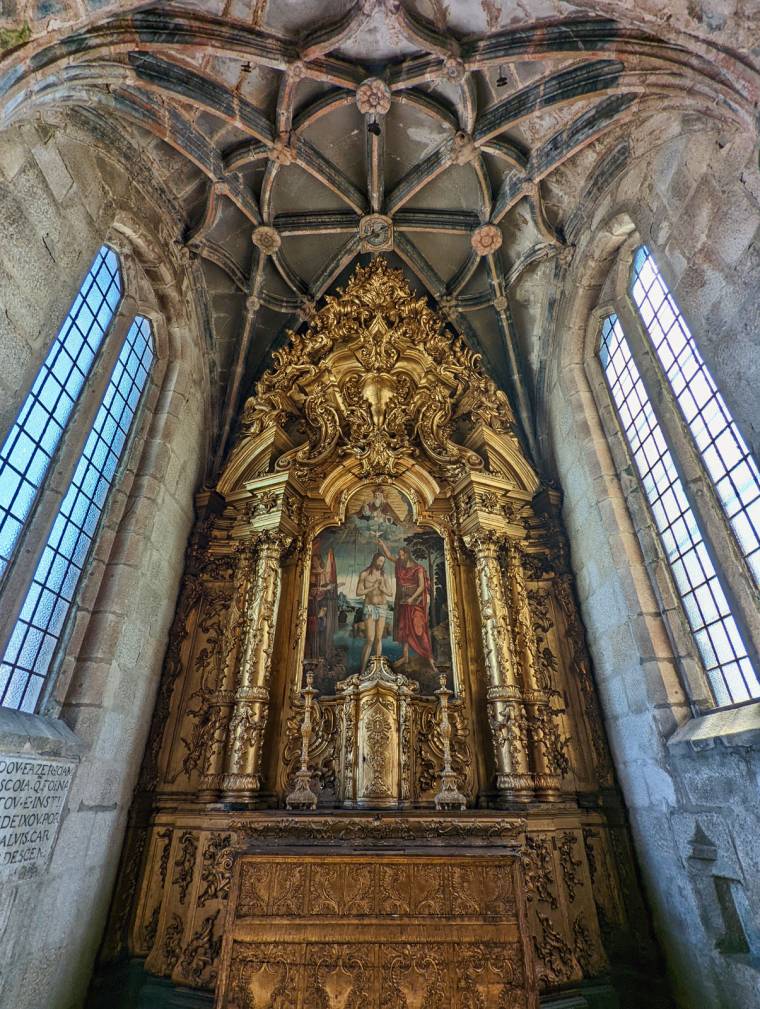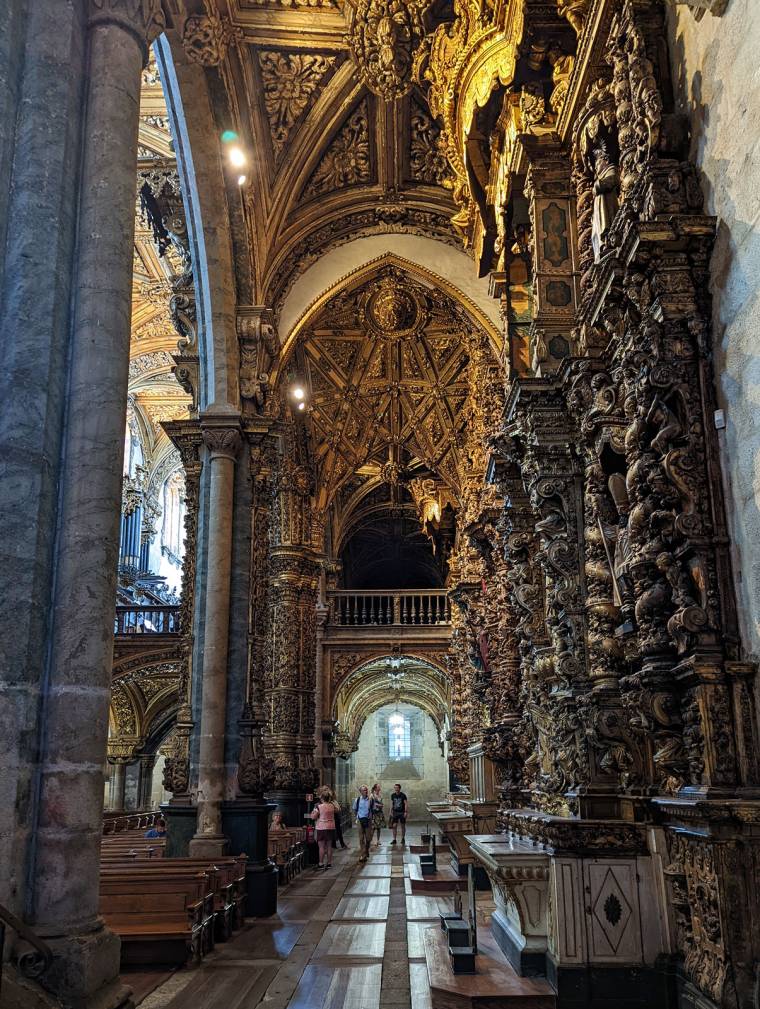A look down one of the side streets off the main square in Porto's Ribeira district.This particular street is Rua da Fonte Taurina. The lower levels and cellars of the buildings around here are some of the oldest in Porto. These days, what was once used for storage now makes way for bars and restaurants.
Related images
The view out of the window of the Alfa Pendular high-speed train as it leaves Porto. This was just after leaving Campanha station on the east of Porto on the journey down to Lisbon. The bridge is the Ponte de Freixo road bridge over the River Douro.This is a great way to travel between Portugal's major cities. It's comfortable and takes around two and a half hours - that involves hitting speeds of up to 230 km/h. If that isn't impressive enough there are plans to upgrade the line to allow speeds of up to 300 km/h.
Related images
The Funicular dos Guindais is a quick and easy way of getting from the Batalha area (near the Cathedral) at the top of town down to the Ribeira - or more importantly back up the hill. There are plenty of other ways of getting between these two parts of town but it does involve a very large hill.The funicular was reinstated as recently as 2001, although there was a lift in the same location a century earlier. Apparently that shut down after a serious accident - but don't let that put you off!
Related images
The Igreja de São Lourenço from the Miradouro da Rua das Aldas. This miradouro, or viewpoint, is located just below the Cathedral and commands some of the city's best views over the historic centre and to the Douro.The best time of day to come up here is towards sunset when the golden rays of the sun light up the facade of the church.
Related images
The view southwards from the Torre dos Clerigos in Porto. Rising over 75 metres from what is already a high point in the city the views from the tower are pretty impressive, and may help you make sense of the haphazard layout of Porto.From this vantage point the most notable building is the old Cadeia da Relação building. This was built as the city's court of appeal but is now home to the Portuguese Centre of Photography.
Related images
The interior of the Igreja de São Francisco in Porto is well known for its extravagant display of Baroque wood carvings smothered in gold leaf. The sheer amount of decor is fairly overwhelming and it is difficult to know where to look. However, if there is one highlight to pick out then it has to be 'The Tree of Jesse'Carved between 1718 and 1721 by Filipe da Silva and Antonio Gomes this masterpiece of gilded and painted wood is quite stunning. The tree illustrates the genealogy of Christ and his descent from the 12 Kings of Judah. At the time it was not unusual for this to be displayed as an actual tree and this sculpture is no exception.The tree traces Jesus' family line back through Joseph to King David and his father, Jesse of Bethlehem. Christ sits at the top of the tree flanked by Mary and Joseph. On the lower branches are ancestors such as King Solomon.
Related images
The Franciscan monastery in Porto dates back to the 13th century and although the monks are long gone and the site much diminished there is still plenty to see. Topping most people's list is a visit to the Igreja de São Francisco with its exuberant Baroque interior of gold and carved wood. However, a ticket to see the church also covers entry to one of Porto's most unusual and macabre visitor "attractions".
The catacombs of the "Third Order of St. Francis" lie in the basement of the Casa do Despacho (Dispatch House) which lies...
The Praça do Infante Dom Henrique is located in the historic centre of Porto about one block back from the Ribeira. The sloping square came about in the 1830s with the building of the Bolsa Palace (Stock Exchange), seen on the right of the photo. Other notable buildings facing on to the square are the Igreja de São Francisco and the Igreja Paroquial de São Nicolau. Behind is the Ferreira Borges market.The square is named after the Infante Henrique (Prince Henry the Navigator) and he is the subject of the statue in the centre. The monument features the prince standing next to a globe with various other characters around the base representing his maritime achievements.
Related images
The Chapel of St John the Baptist (Capela de São João Batista) in Porto's Igreja de São Francisco. This lavishly decorated chapel within the main church predates much of the Baroque excess on display.As with other chapels in the church this was funded by one of Porto's wealthy families during the 16th century as a pantheon. Built in the 1530s for the Carneiro family the chapel is in the Manueline style which is not seen as often in Porto. I would hazard a guess that the gold-gilt altarpiece is later - probably contemporary with the other carved wood in the main church.
Related images
A view down one of the aisles of the Igreja de São Francisco in Porto. During the early 18th century the Gothic church was extensively decorated with exuberant gilt wood work (talha dourada) by some of Portugal's most notable wood carvers. This is particularly apparent in the aisles and on the ceiling.It is said that up to 500 kg of Brazilian gold were used in coating this elaborately carved wood.
